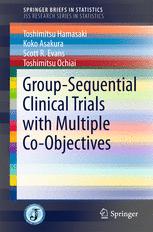

Most ebook files are in PDF format, so you can easily read them using various software such as Foxit Reader or directly on the Google Chrome browser.
Some ebook files are released by publishers in other formats such as .awz, .mobi, .epub, .fb2, etc. You may need to install specific software to read these formats on mobile/PC, such as Calibre.
Please read the tutorial at this link: https://ebookbell.com/faq
We offer FREE conversion to the popular formats you request; however, this may take some time. Therefore, right after payment, please email us, and we will try to provide the service as quickly as possible.
For some exceptional file formats or broken links (if any), please refrain from opening any disputes. Instead, email us first, and we will try to assist within a maximum of 6 hours.
EbookBell Team

5.0
110 reviewsThis book focuses on group sequential methods for clinical trials with co-primary endpoints based on the decision-making frameworks for: (1) rejecting the null hypothesis (stopping for efficacy), (2) rejecting the alternative hypothesis (stopping for futility), and (3) rejecting the null or alternative hypothesis (stopping for either futility or efficacy), where the trial is designed to evaluate whether the intervention is superior to the control on all endpoints. For assessing futility, there are two fundamental approaches, i.e., the decision to stop for futility based on the conditional probability of rejecting the null hypothesis, and the other based on stopping boundaries using group sequential methods. In this book, the latter approach is discussed. The book also briefly deals with the group sequential methods for clinical trials designed to evaluate whether the intervention is superior to the control on at least one endpoint. In addition, the book describes sample size recalculation and the resulting effect on power and type I error rate. The book also describes group sequential strategies for three-arm clinical trials to demonstrate the non-inferiority of experimental intervention to actively control and to assess the assay sensitivity to placebo control.